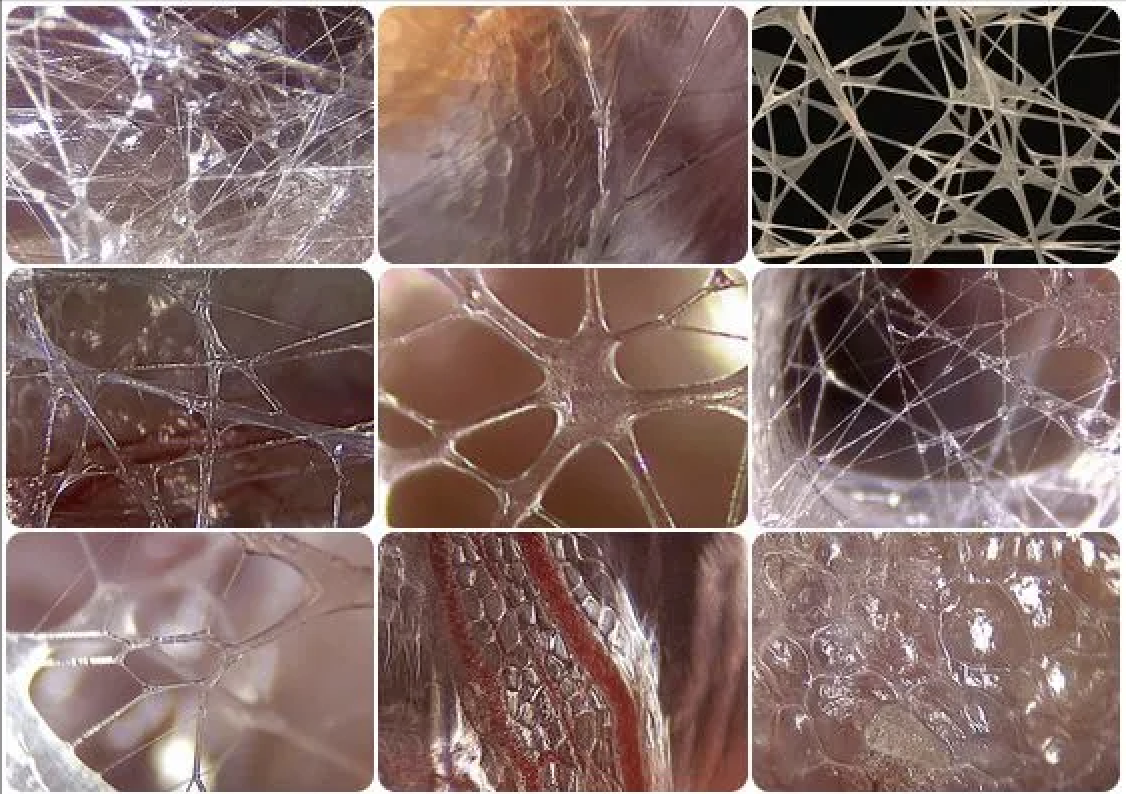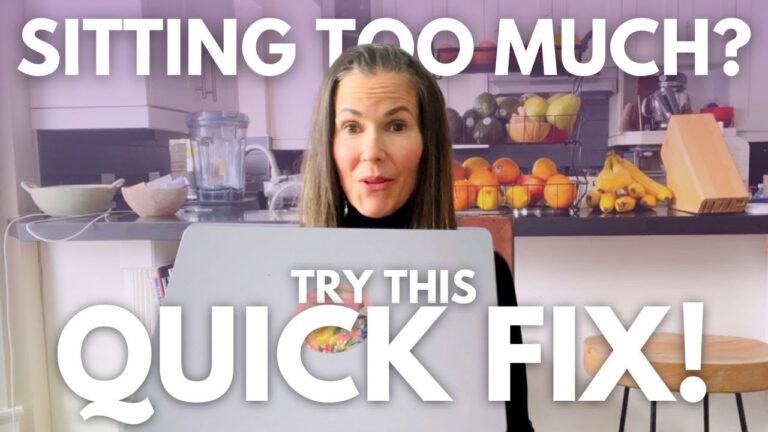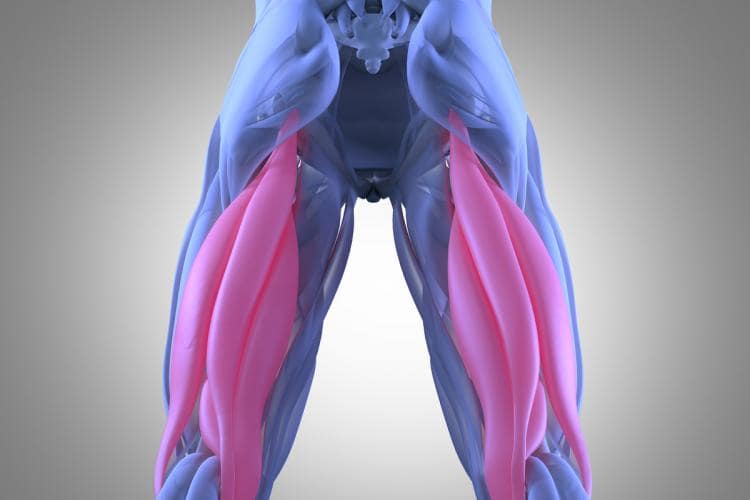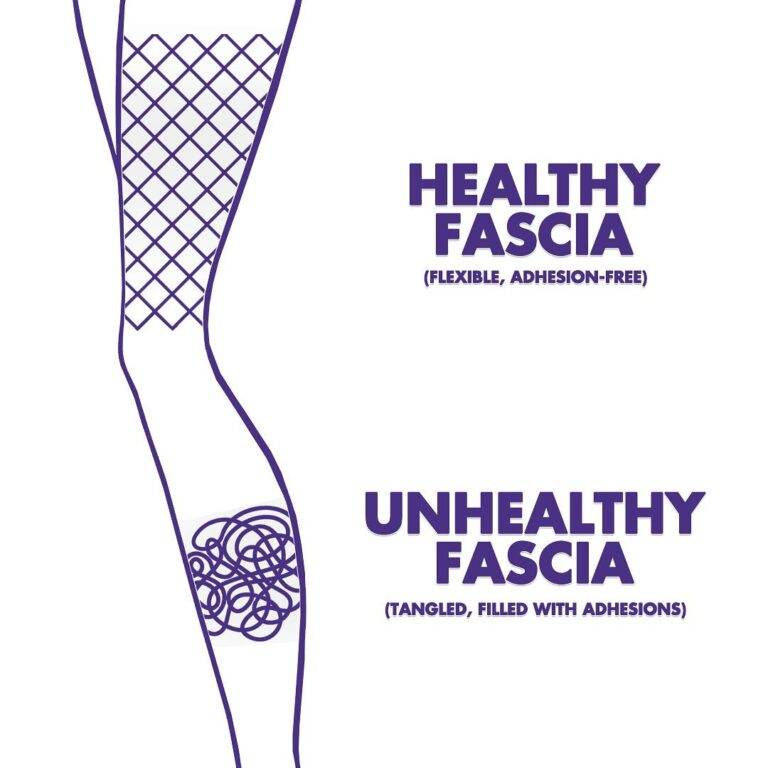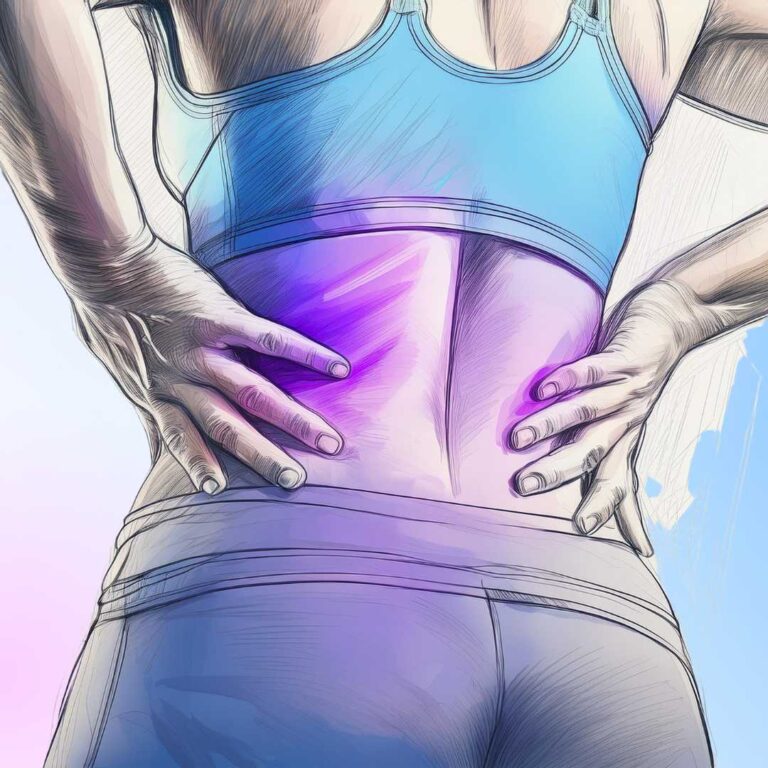Fascia 101: What is Fascia Stretching & Why It matters
What is Fascia?
Ever heard of fascia? This essential tissue in your body plays a bigger role than most of us realize. Today, we’re diving into the world of fascia and exploring why fascia stretching – in the way of fascia flo – is so impactful to your health and well-being.
Fascia is the connective tissue that literally holds us together, our body’s “scaffolding”, so to speak. We think our bones and muscles hold us together – they do not! It is the fascia holding our bones and muscles in place. Without our muscles and bones, we would still have our unique shape. Without the fascia? Our bones, muscles, and organs would just fall to the floor!
Fascia connects it all, and also separates and protects. As humans, we are made up of about 70 to 100 trillion cells – all acting together. How do they communicate and integrate? You guessed it – our fascia!
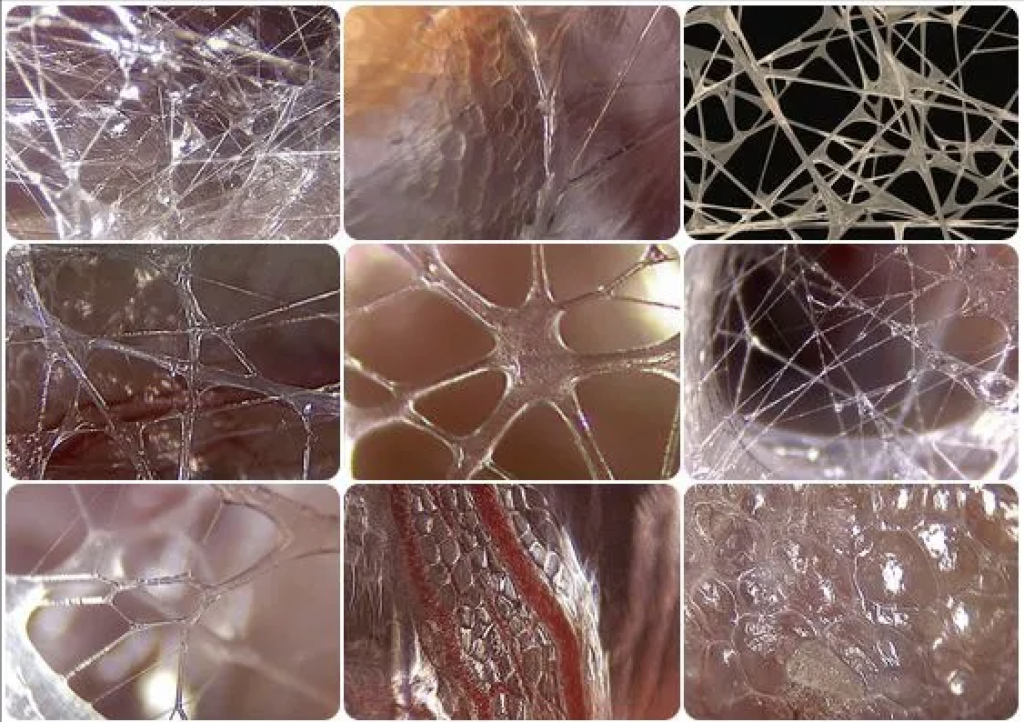
Imagine a spiderweb woven throughout your entire body. That’s a good way to begin to visualize fascia. However, this 3D matrix of fascia isn’t just one layer of tissue under our skin.
Until recently, we believed fascia was like a ‘packing material’ in the body. Now we know that fascia permeates every tissue in our body, and is a regulatory system for our body. Fascia is an information highway, regulating temperature, fighting infection, facilitating lymphatic flow, and storing body intelligence.
Fascia is being described now as our “organ of form”, developing in the embryo at about 2-3 weeks. The fascial tissue is ubiquitous and continuous, surrounding and supporting everything from your muscles and bones to your organs and nerves.

This analogy might help you understand the ubiquitous nature of our fascial tissue: Think of when you make a hearty pot of soup with beans, vegetables, spices and herbs. The vegetable broth is akin to our fascia – permeating and surrounding, yet also separating all of the components of our soup!
Healthy Fascia vs. Unhealthy Fascia
When fascia is healthy in our bodies, it has “glide and slide”. It’s hydrated, flexible, moving, elastic! When fascia becomes unhealthy, it becomes stiffened, tough, matted, dry, dehydrated, plastic-y. Since our muscles move within the fascia (and fascia penetrates our muscle fibres) we want our fascia to slide & glide! Watch this short video.
Also, since the fascia is an “information highway” for our bodies, it needs to be functional for this information to be communicated. If there is stagnation in the fascia, it is like a traffic jam. Energy flows in the path of least resistance. If there is resistance in the fascial tissue, energy is not flowing to our systems as it should.
How to Stretch Your Fascia?
Fascia is a unique tissue in the body and requires a unique movement. All of our fitness modalities either stretch or strengthen our muscles.
Fascia stretching with the method does both. We strengthen the muscle while stretching it, which also stretches the fascia! When we follow the fascia flo formula of muscle contraction plus lengthening, it integrates the fascial tissue. This tensile tug against the fascial fibres begins to reconfigure the fascial matrix, reorganizing it into a more functional state. Any old, brittle (dysfunctional) fascia is sheared and eliminated in our systems, and remaining fascia is restructured so that it is healthier, more hydrated, more functional in our bodies!
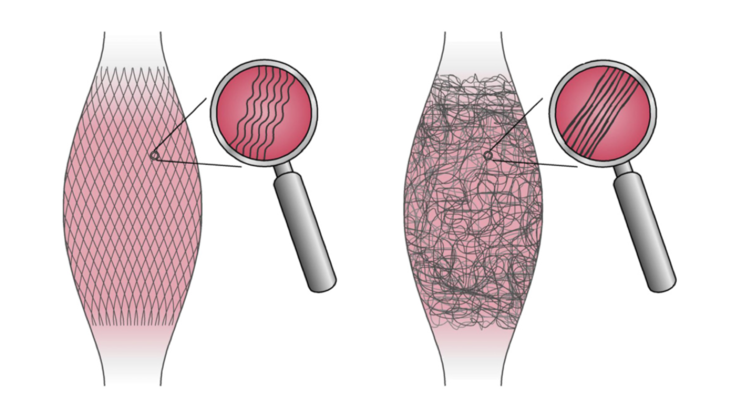
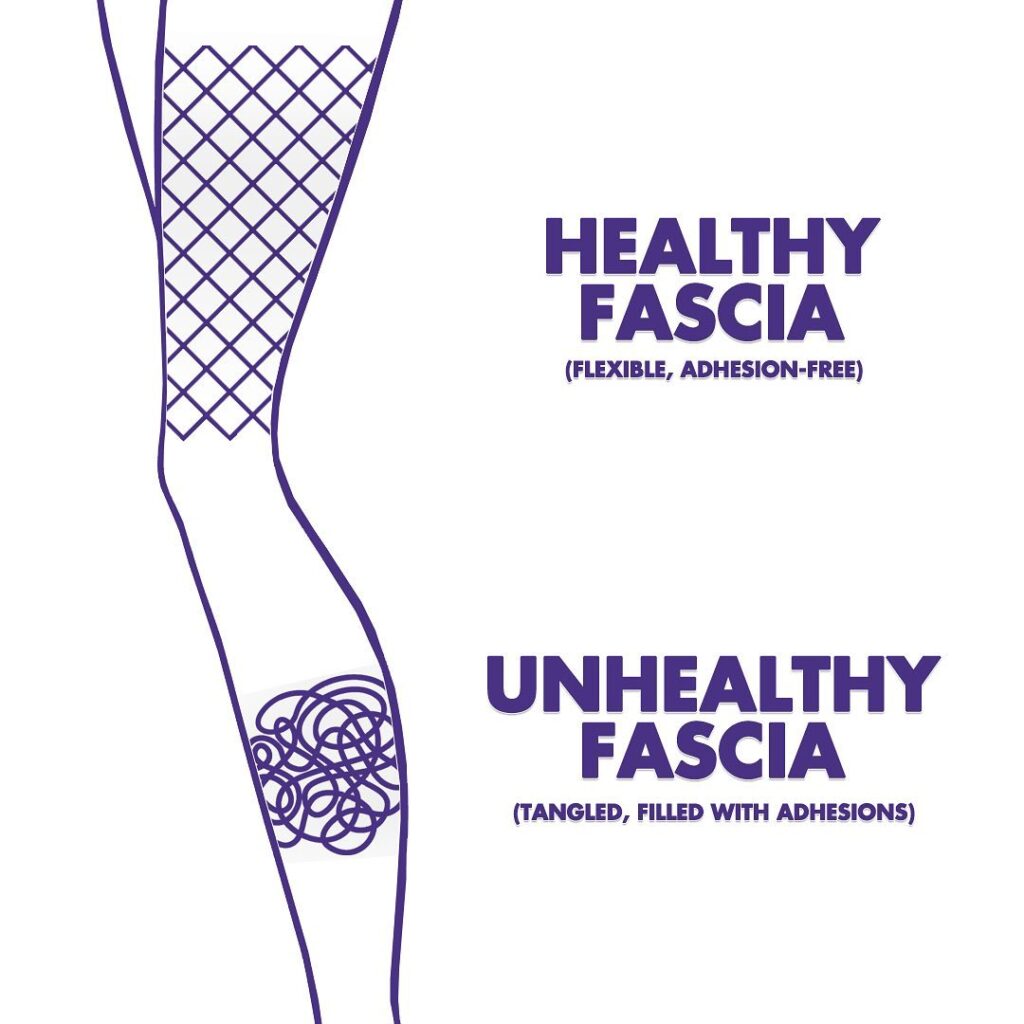
Benefits to Stretching Your Fascia
What does functional fascia even mean? When we make our fascia healthier, more functional, we can experience many benefits. Here are just some of the benefits of stretching our fascia:
- Improved Flexibility: Tight fascia restricts your range of motion, making it harder to bend, twist, and move freely. Fascia stretches help loosen those restrictions, allowing for more flexibility and ease of movement.
- Reduced Pain and Stiffness: Tight fascia creates stiffness and pain, particularly in the joints. Working with the fascpain relief and faster recovery.
- Enhanced Performance: Whether you’re a weekend warrior or a fitness enthusiast, good fascia health can improve your performance. By optimizing your range of motion and reducing muscle tension, you can move more efficiently and potentially reach your fitness goals faster.
- Better Posture: Tight fascia in your back can contribute to a slouched posture. Fascia stretches for your back and core can help improve alignment, leading to better posture and reducing strain on your joints.
Fascia Stretches for Beginners:
Ready to explore the world of fascia flo stretching? Here are a couple of beginner-friendly options to get you started:
Remember:
- Follow the FLO formula! FLEX or contract the muscle, LENGTHEN with that resistance, OBSERVE when the resistance fades – then stop, return to the start and repeat.
- Consistency is key! Try to do a full body flo 2-3/week, as we are whole and working with full body flos give us great results. On alternate days, aim to include 10-15 minutes of flos into your day. This could be hamstrings, or upper body, whatever you feel you need.
- Always defer to your body. I am here to guide you, but you are your best teacher. Listen to what your body is needing, shifts in angles, reducing resistance or increasing it, etc.
- Try different versions of flos! We have 8 organs and muscle groups in the upper body, and 8 in the lower body. In the members area you will find different versions of each to find upper body and lower body flos that work best for you.
The importance of fascia cannot be underestimated. I’m excited for you to unlock the many benefits of fascia flo, from improved flexibility and reduced pain to better posture, digestion, immmunity and enhanced sports performance.
Get started . If a monthly membership isn’t optimal for you, my fundamentals course offers classes and details at a very affordable price.
Have more questions about fascia? Visit this page for more or email me here.


